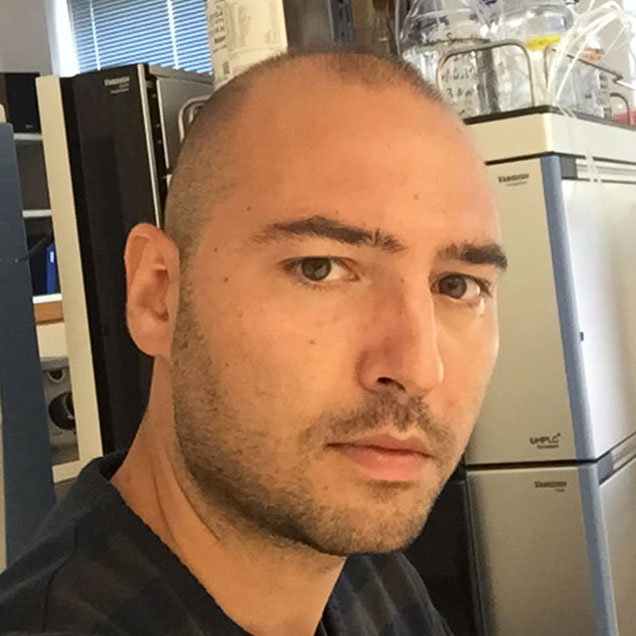Since a chance discovery by U.S. Army scientists studying mustard gas during World War II, chemotherapy has added countless years to cancer patients’ lives around the world.
Even with revolutionary new treatments offering some patients last-minute success at top centers in this country every day, chemotherapy’s critical spot in the cancer treatment lineup remains clear.
But the pioneering therapy has a huge downside: It often stops working.
“The problem is patients develop resistance to the drugs, and not just one drug, but all in the class of drugs,” said Mercedes Rincon, PhD, a scientist at the University of Colorado Anschutz Medical Campus and member of the CU Cancer Center who has been studying chemoresistance since 1997.
Increasing the chemotherapy doses to counteract the resistance is generally not a viable option because of risks of toxicity, threatening especially the liver and heart, Rincon said.
Now, a study that she and fellow CU Cancer Center member Angelo D’Alessandro, PhD, took part in and published May 14 in Nature Communications, offers some promise for overcoming the issue.
Chemotherapy: Not headed for the backburner yet
“I know that everybody is so excited about immunotherapy, and I’m an immunologist, too,” said Rincon, a professor in the Department of Immunology & Microbiology in the University of Colorado School of Medicine.
“But these treatments are very expensive. Not everyone can afford them,” she said of advanced therapies, such as CAR T-cell and monoclonal antibody options. “And there’s no way we can fight cancer worldwide with these kinds of treatments.”
Chemotherapy, often used both pre- and post-surgery to shrink cancerous tumors and eradicate any cancer cells that remain, is also generally required before a patient can be approved for the newer treatments, Rincon said.
“More recently, they are combining chemotherapy with some of these other therapies. They found that it worked more effectively than just immunotherapy alone. So, overall, I say chemotherapy right now is the most commonly used treatment for any type of cancer.”
Study focuses on what’s fueling the problem
Given its importance, the race to find a chemoresistance solution has been ongoing. The pair’s recent research focused on a long-identified mechanism – ATP binding cassette (ABC) transporters – which Rincon describes as “little pumps” on the outer surfaces of cancer cells.
As the chemotherapy drugs invade the cells, the ABC transporters pump them out, reducing the effectiveness of the treatment and giving the cells time to form resistance.
“It’s like a cancer cell is a small boat, and you want to just sink the boat. You attack it with drugs, like chemotherapy, that poke a hole in the boat. Then the water starts coming in, and there are these pumps that pump the water. That’s exactly what ABC transporters do. They pump the water out and keep the boat afloat.” – Angelo D’Alessandro, PhD, on a mechanism that contributes to chemotherapy resistance
Studies aimed at inhibiting the pumping action have shown little success – until now.
In their study, Rincon and D’Alessandro, an associate professor in the Department of Biochemistry and Molecular Genetics, focused in on what fuels the pumps, or ABC transporters. They then found a way to apply the brake.
Zeroing in on the cell powerhouse: mitochondria
“For almost a century, we believed that cancer cells used a glycolysis pathway to generate energy (adenosine triphosphate, or ATP),” Rincon said of when glucose is converted to lactate for energy. “They do use this to grow.”
But in recent years, scientists have realized that mitochondria, the powerhouse that generates energy in most of the body’s cells, does play a role in cancer cell metabolism.
“What we found in this study is that these ABC transporters – like pumps for a well – use a lot of energy,” Rincon said. “It’s not like your microwave. You need a lot of energy to pull the water out from the ground.”
So, like adding a generator to a house well pump for more power, chemoresistant cancer cells turn to mitochondria, boosting their ability to produce ATP and fueling the ABC transporters’ efflux of drugs that leads to treatment failure.
“Now, we say it’s not whether the transporter is there; it’s whether you have the energy coming from mitochondria for these transporters to work.”
Their next question was how to stop the energy flow. The researchers turned to a molecule called methylation-controlled J protein, or MCJ.
Linking lack of MCJ molecule to mitochondria power boost
Past studies, including some of Rincon’s, connected MCJ with chemoresistance and poorer outcomes for breast cancer patients.
“We did the studies in animal models, and we found that when the mice lost this molecule, MCJ, they became resistant to chemotherapy. It doesn’t really affect cancer growth, just the response to chemotherapy.”
“We also published a study showing in human patients that loss of MCJ in breast cancer is clearly a marker for chemoresistance.”
“It turns out that MCJ is an inhibitor, or a brake, for mitochondria metabolism – kind of like nature’s way of saving energy.” – Mercedes Rincon, PhD
In this study, Rincon and D’Alessandro showed that increased mitochondrial respiration in chemoresistant cancer cells is due to the lack of MCJ.
“It turns out that MCJ is an inhibitor, or a brake, for mitochondria metabolism – kind of like nature’s way of saving energy,” Rincon said.
Also in this study, the researchers developed MCJ mimetics, giving that brake to cells where it is absent. And it worked.
“When you give these therapeutic mimetics with chemotherapy, they inhibit the mitochondria, and the drug goes into the cancer cells, and the cells die,” Rincon said.
The studies were done both in vitro and in vivo with mice and human cells.
“Administering these MCJ mimetics in combination with standard chemotherapeutic drugs could become an alternative treatment strategy for many types of cancer,” Rincon said. “And, by evading chemoresistance, it could lead to much better outcomes.”

.jpg)



